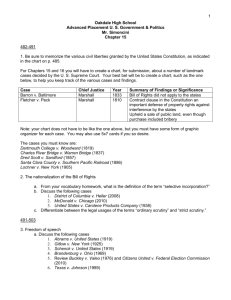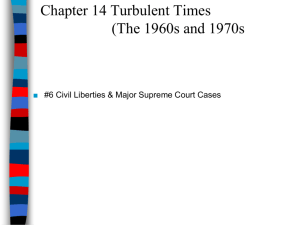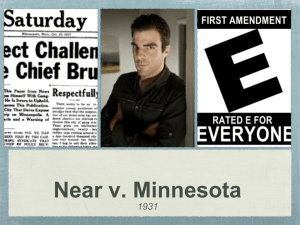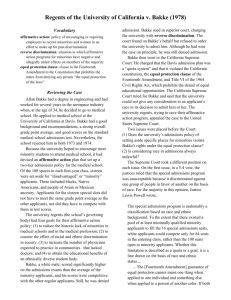Discrimination Cases, Compared
advertisement
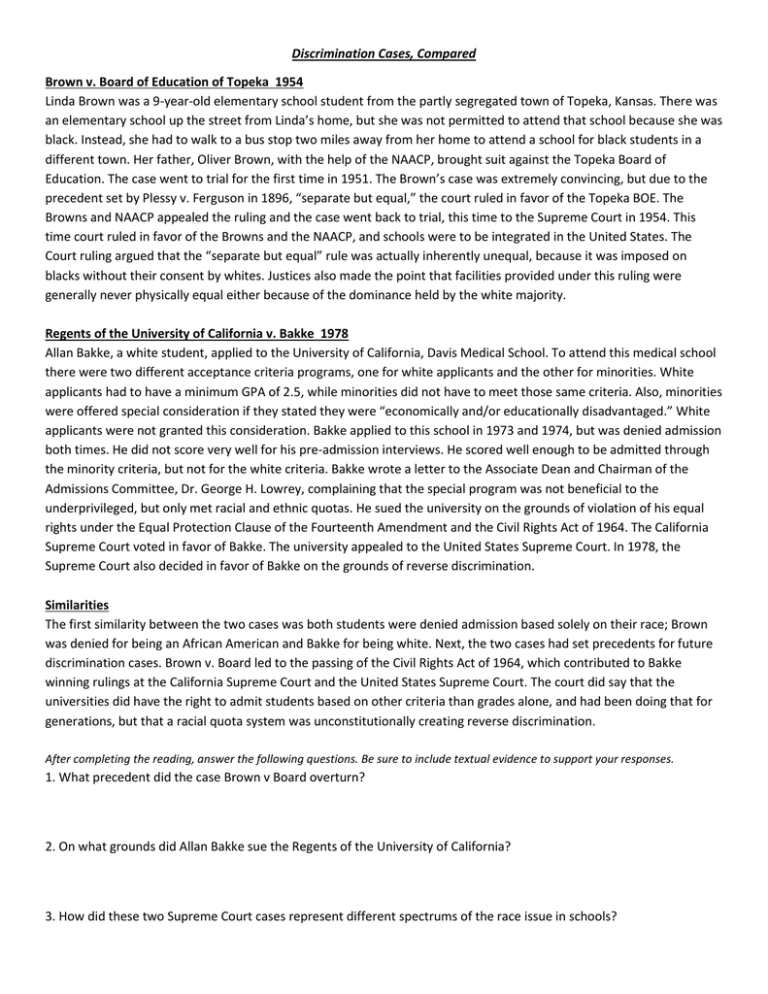
Discrimination Cases, Compared Brown v. Board of Education of Topeka 1954 Linda Brown was a 9-year-old elementary school student from the partly segregated town of Topeka, Kansas. There was an elementary school up the street from Linda’s home, but she was not permitted to attend that school because she was black. Instead, she had to walk to a bus stop two miles away from her home to attend a school for black students in a different town. Her father, Oliver Brown, with the help of the NAACP, brought suit against the Topeka Board of Education. The case went to trial for the first time in 1951. The Brown’s case was extremely convincing, but due to the precedent set by Plessy v. Ferguson in 1896, “separate but equal,” the court ruled in favor of the Topeka BOE. The Browns and NAACP appealed the ruling and the case went back to trial, this time to the Supreme Court in 1954. This time court ruled in favor of the Browns and the NAACP, and schools were to be integrated in the United States. The Court ruling argued that the “separate but equal” rule was actually inherently unequal, because it was imposed on blacks without their consent by whites. Justices also made the point that facilities provided under this ruling were generally never physically equal either because of the dominance held by the white majority. Regents of the University of California v. Bakke 1978 Allan Bakke, a white student, applied to the University of California, Davis Medical School. To attend this medical school there were two different acceptance criteria programs, one for white applicants and the other for minorities. White applicants had to have a minimum GPA of 2.5, while minorities did not have to meet those same criteria. Also, minorities were offered special consideration if they stated they were “economically and/or educationally disadvantaged.” White applicants were not granted this consideration. Bakke applied to this school in 1973 and 1974, but was denied admission both times. He did not score very well for his pre-admission interviews. He scored well enough to be admitted through the minority criteria, but not for the white criteria. Bakke wrote a letter to the Associate Dean and Chairman of the Admissions Committee, Dr. George H. Lowrey, complaining that the special program was not beneficial to the underprivileged, but only met racial and ethnic quotas. He sued the university on the grounds of violation of his equal rights under the Equal Protection Clause of the Fourteenth Amendment and the Civil Rights Act of 1964. The California Supreme Court voted in favor of Bakke. The university appealed to the United States Supreme Court. In 1978, the Supreme Court also decided in favor of Bakke on the grounds of reverse discrimination. Similarities The first similarity between the two cases was both students were denied admission based solely on their race; Brown was denied for being an African American and Bakke for being white. Next, the two cases had set precedents for future discrimination cases. Brown v. Board led to the passing of the Civil Rights Act of 1964, which contributed to Bakke winning rulings at the California Supreme Court and the United States Supreme Court. The court did say that the universities did have the right to admit students based on other criteria than grades alone, and had been doing that for generations, but that a racial quota system was unconstitutionally creating reverse discrimination. After completing the reading, answer the following questions. Be sure to include textual evidence to support your responses. 1. What precedent did the case Brown v Board overturn? 2. On what grounds did Allan Bakke sue the Regents of the University of California? 3. How did these two Supreme Court cases represent different spectrums of the race issue in schools?


